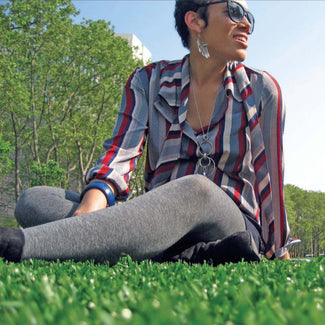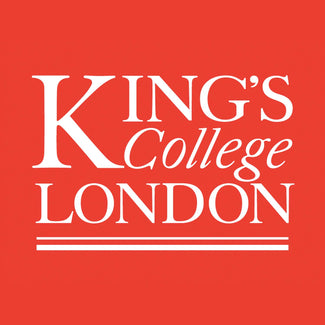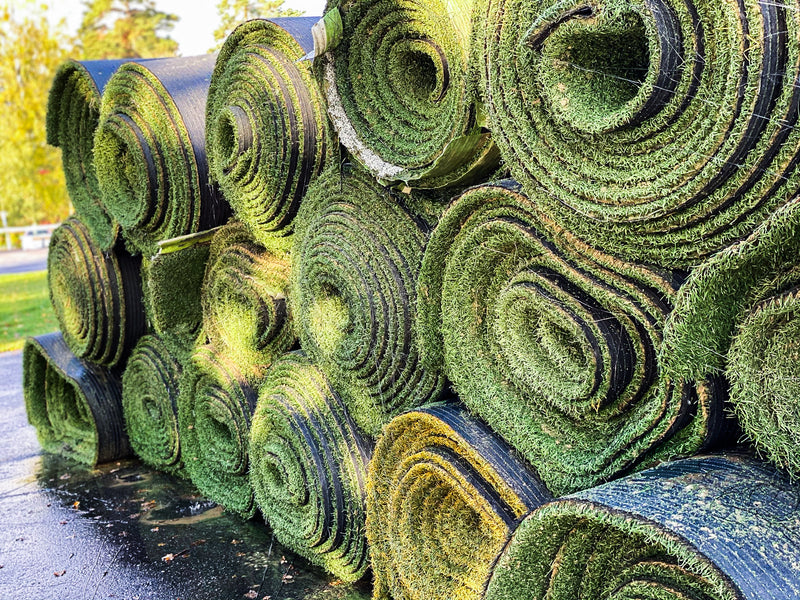The Case Against Artificial Turf
Roger’s Gardens Vision: We believe in beautiful
environments that sustain the planet and its people.
1. Plastic lawns have no habitat or wildlife function
2. Plastic lawns do not absorb carbon and release oxygen
Planting and preserving trees and shrubs are a critical component to reducing the impacts of global climate change. Rainforest destruction and loss of open space is a huge concern. So why would we replace a living surface with a synthetic, artificial one? How is it even legal?
3. Plastic lawns use huge volumes of plastic
Single use plastic straws are being banned and replaced by paper, plastic grocery bags are already a big no-no. Why would it be a good idea to put plastic bags over the soil of our gardens?
4. Plastic lawns cannot or will not be recycled
Synthetic turf is made from a variety of human made unnatural materials including polyethylene, polypropylene, and nylon. These materials are built to last, potentially for centuries. While individually these components can theoretically be recycled, artificial turf is not recycled.
5. Plastic lawns have a big carbon footprint
The processes involved in mixing, coloring, and molding the plastic releases carbon. In addition, further carbon is released from the energy used as well as the carbon released from transporting these heavy rolls.
6. Plastic lawns kill soil life
By creating a dense plastic barrier on top of compacted soil and sand, no organic material gets to the soil. Natural materials feed the soil life, like worms and microorganisms that keep soil healthy.
7. Plastic lawns pollute soils
Plastic lawns break down and contaminate our soils for centuries regardless of recycling. It is essentially impossible to extract microplastics from soil. Additionally, pollutants like particulates and other chemicals that land on plastic grass are wash off and into water supplies, instead of being cleansed by soil microorganisms.
8. Plastic lawns look awful after only a few years
This gives them a very short shelf life in comparison to living landscapes, despite manufacturers claims of 10 – 20 years, which is still quite short for an outdoor surface.
9. Plastic lawns overheat in summer
Plastic lawns retain heat from the sun and warm environments, thus increasing energy consumption and often making areas undesirable to visit.
10. Plastic lawns need cleaning and maintaining
As an unnatural surface that does not recycle germs, dirt and other debris as a natural lawn would, you need to clean it. This includes brushing and washing, which then deposits those pollutants into the environment and our water resources.
11. Plastic lawns deprive people from contact with nature
Some of the most important childhood memories are sitting among plants, plucking a leaf, or a daisy or a dandelion flower. That sense of touch and smell is such an important part of a life experience. Children growing up without a connection to nature is now considered Nature Deficit Disorder and believed to contribute to many behavioral conditions.
 |
A paper from Environment and Human Health providing a careful analysis of studies that the synthetic turf industry uses to justify various safety claims. Very enlightening. |
View Paper from EHHI
 |
A well-written article in the journal Environmental Health Perspectives discussing the debate over health and synthetic turf. |
View Paper from EHP
 |
A recent short paper from the Swedish University of Agricultural Sciences discussing the loss of ecosystem services and some of the environmental impacts of artificial turf. |
View Paper from SUAS
 |
For those that want to look at the more technical and societal challenges of artificial turf use, we suggest this research by King’s College |
View King's College Report
 |
|
| A paper from Environment and Human Health providing a careful analysis of studies that the synthetic turf industry uses to justify various safety claims. Very enlightening. |
View Paper from EHHI
 |
|
| A well-written article in the journal Environmental Health Perspectives discussing the debate over health and synthetic turf. |
View Paper from EHP
 |
|
| A recent short paper from the Swedish University of Agricultural Sciences discussing the loss of ecosystem services and some of the environmental impacts of artificial turf. |
View Paper from SUAS
 |
|
| For those that want to look at the more technical and societal challenges of artificial turf use, we suggest this research by King’s College |
View King's College Report
| <<< | Most Lawns Are Wasteful and Should Be Eliminated | Lawn Oceans and Grassy Parkways Should Be Removed | >>> |
MAIN








